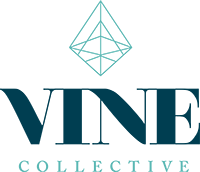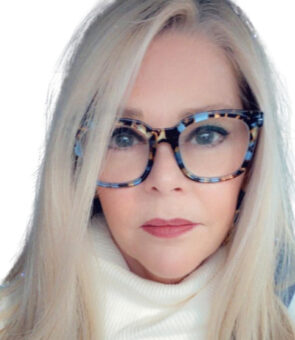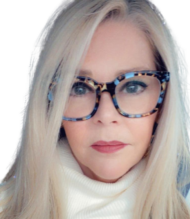Posted on August 7, 2023
Marketing has changed significantly, and business owners should change their marketing strategy for their businesses to survive. Immersing clients into your brand creates a sensory experience that attracts them. In this episode, Kitty Hart, the VP of Client Brand Experience at Heroic Productions, shares her take on creating a brand experience for clients to market and sell your product or service. She also shares how her passion developed into the brand experience. Kitty also reveals the experiential marketing Heroic Productions create. Tune in to this episode and gain insights from Kitty Hart to lead you into marketing your business.
—
Listen to the podcast here
Experiential Marketing: Creating Your Brand Experience With Kitty Hart
Our guest is Kitty Hart. Kitty is the VP of Client Brand Experience at Heroic Productions. With over 28 years of experience, she specializes in creating unforgettable in-person events for large corporations and organizations. Kitty is an expert in brand strategy, package design, brand storytelling, and experience design. She is a sought-after speaker, writer, and mentor. Kitty’s passion for experiential marketing makes her an invaluable asset to the Heroic team and us. Thank you so much for joining us.
Thank you, Steph. It’s wonderful to be here.
I’m so excited to talk to you. A lot of people know that brand experience is one of my passions. I would love to hear your take on it and also the take and direction of Heroic. You do some pretty amazing things but let’s start by getting to know you a little bit first. Tell us about your journey and your story of how you got to where you are now.
Thank you. I went to a Liberal Arts college. I will be brief about this. I’m not going to go into great detail that far back. However, as I mentor young people who are coming out of college, I always want to remind people that you don’t have to know exactly what you want to do even going into college or even the moment that you graduate from college. I graduated from a wonderful Liberal Arts college. I came out with a degree in speech and communications and had no idea what I wanted to do but knew that foundation could be applied in many different areas. I floundered around for 4 or 5 years. Much to my surprise, I decided that I wanted to go into sales.
Did you decide or did it just happen?
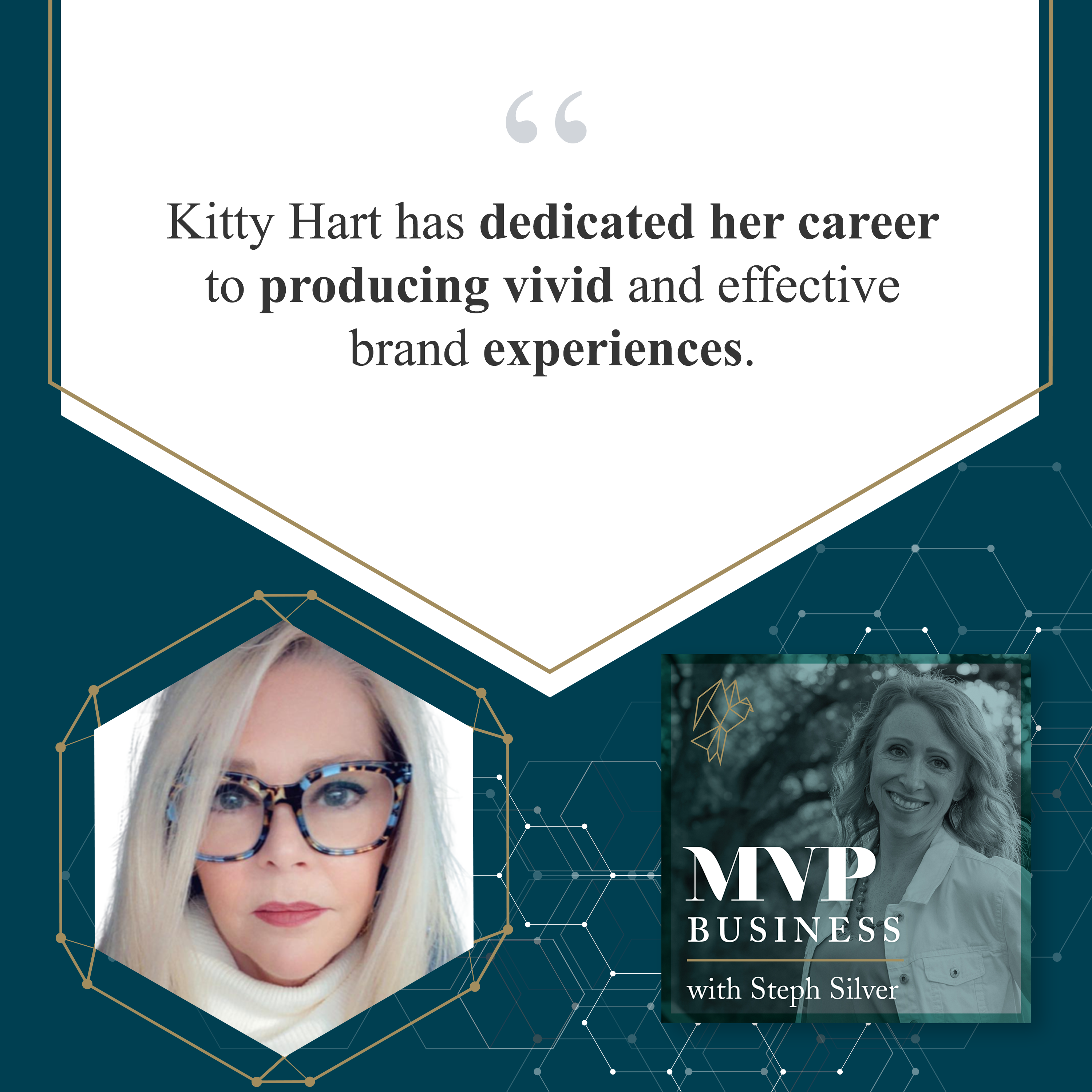
No, it was a very pointed decision. I was floundering around a bit. I was working at a big brokerage company. I was a sales assistant. I was doing this support work for salespeople. I looked at it and I’m like, “I want to do that. I know how much work it is to be a sales assistant. If I’m going to work this hard, I want to reap the benefit. I want to be the salesperson.” That was my motivation. I went looking for a sales job much to my surprise because when I graduated from college, I had a jaded opinion of what sales meant. It’s an unfortunate situation because sales naturally has that.
People think of used car salesmen and they think of a terrible and manipulative attorney.
My motivation was what it was. Let’s be honest. I want to be able to live a certain lifestyle. I feel like the way that I can be most in control of my success or failure was to be a salesperson. Eat what you kill. That’s the concept. I went looking for a sales job and thus started my whole career in marketing because I landed at a company. During this time, it was the late ’90s.
Video marketing had become this big booming tool. Big marketers were putting out into the mail a videotape that was a five-minute promotion. One of our big clients was the ad agency for Disney. These big brands were wanting to move away from mass marketing to more of a one-to-one approach. It truly wasn’t one-to-one but it was a more personalized approach where they would send a video that says, “You’re looking to go to Disney. Here’s what you can expect.” It was a video.
I was a salesperson there. I worked there for seven years. I learned how to sell there. My clients were marketing firms and advertising agencies with big brands. That’s how I started going down that road. Most of my career has been in a business development role. Everything that I know about marketing and branding has come from directly working with my clients and learning along the way. It’s the best way to learn.
I talk to young people all the time. You can plan all you want. Sometimes life happens but if you are open and looking out there and seeing, “The way that person lives or acts or their daily life, I want to go in that direction,” you take a few steps. Sometimes when you’re young and you don’t have kids, it’s easy to take a big leap. It seems scary but it’s so much easier. I know a lot of people who have marketing degrees and who have never had a marketing job. I know a lot of people like me who don’t have a degree in marketing but have been doing it for twenty years. It has become my life. The way that I got into it was serendipitous and windy as well. It seems like that was the path that was laid out.
Sales is marketing, and marketing is sales but they are two different modes of communicating. A lot of companies will have a director of sales and marketing, or they think their salesperson is sales and marketing. Sometimes that works, and sometimes it doesn’t. Since you’ve been in both worlds, what’s your opinion of mashing those two together?
Mashing the two together is critical. It’s tremendously important in the world that we live in now. It doesn’t even matter how big your company is. I’m sitting here and putting my hands together. My fingers are completely wrapped around each other. This is the way that sales and marketing need to function. We need to break down the silos that exist between these departments. Historically, there are always battles between sales and marketing, “Marketing doesn’t know what we need.” Marketing says, “Sales doesn’t talk to us.” Sometimes we see the same dissonance between sales and manufacturing. It’s the front wheel and the back wheel. They need to be completely aligned.
We need to break down the silos that exist between sales and marketing. Click To TweetI will often say, “If you haven’t changed the way you’re selling, you are probably feeling a pretty significant pain in the sales process.” There are lots of ways for sales and marketing to come together and work together so that marketing is providing sales what they need, and sales is reporting back to marketing to say, “Here’s what we’re hearing. These are the struggles that our customers are telling us about. These are the questions that our customers are having. We need content. Create content so that we can serve that to them when they want it and need it.”
Answer the questions ahead of time. I love that you said we need to break down the silos in business. We‘re doing this more and more because we have to in order to survive in business but it goes into product development and everything else in the business as well. They all need to be communicating because sales are hearing directly from the customers what’s working and what’s not working, and then marketing needs to know what are the actual benefits.
“You tell us the features of how fast this machine is, but how does it benefit? We can make that stuff up based on our research or quantitative analysis, but let’s do some quantitative analysis and figure out how to best communicate the benefit of this product or service to our customers.” All of that goes into what we’re talking about, which is brand experience. Talk to me about what your definition of brand experience is and how you developed a passion for sales into a brand experience.
The passion came from recognizing the transition from a flat transactional sales experience to, “We can create an emotional response from someone when we create an experience for them. That’s more impactful. That’s way more fun.” For me, it’s a more vibrant creative process to come up with these approaches and ideas. How can we create a better experience for people that will be more meaningful to them? It all comes down to the fact that we aren’t consumers. We are human beings. We want to feel something. When we feel something, what happens? We remember, and we want to share.

Brand Experience: We are human beings, and we want to feel something. When we feel something, we remember, and we want to share.
The rise of experiential marketing has happened over the last few decades. It has been fun to watch brands learn about it, understand it, and then go with it. This is also something that I’ve shared anytime I have an opportunity to talk about this. Experiential dates all the way back to the 1800s. It’s not necessarily a new thing. People don’t realize that until you start to say that back in the day, old brands like Wrigley and Aunt Jemima showed up at the World’s Fair in Chicago and started handing out the product. William Wrigley Jr. handed out pieces of gum. Those were the first examples of experiential marketing. I wouldn’t call that an immersive experience but it was the beginning of it.
Breaking that down, when somebody then remembers the amazing experience of being at the World’s Fair, they remember chewing Wrigley gum, the flavor, and how the whole experience felt versus just going to the store and having to decide based on this new product and the packaging design, “Do I want this? I don’t know.” If you have the whole sensory experience that’s connected to the World’s Fair, then you’re going to think, “This is a groundbreaking and wonderful feeling that I had. I want to tell people and share about it.” When I see it in the store, I go, “There it is.”
I went to Unleash the Power Within by Tony Robbins several years ago. My kids are 8 and 11. They want to blast music in the car. One of the songs that they’re blasting is one of the songs that Tony played multiple times. He blasts music, and everybody dances and claps. Talk about the brand experience. His whole thing is 100% an immersive experience. Hearing that song, my son wants to play it over and over again. My whole weekend experience was hearing that song over and over again. I get pumped, “Take on the world all over again.” I feel like I have 15,000 people around me all over again. I go back to the office feeling like I just came from the conference. That’s what brand experience is all about.
It‘s sense marketing. It’s audio. It’s being aligned with another brand. It’s being at the World’s Fair and having that feeling with it. For small companies and small brands, you don’t necessarily have to create a big immersive experience. You can align yourself with the immersive experience. You can be a sponsor for your local fair or whatever it is. You think about first the feeling that you want to create.
This all starts culturally and internally so that your team knows what feelings need to be attached to and created, but then taking that step further and seeing the human that we want to talk to, not to just sell to but the human that we want to interact with. What feeling do we want them to feel? Where are they feeling that feeling? What helps them to feel that feeling? Going to a movie theater, you smell popcorn. It’s not so that they can sell you the popcorn. It’s so that you can have the whole movie theater’s immersive experience. How can your brand take that to the next step little by little until you are a big organization having those brand experiences?
There’s real science behind this. There’s a reason why when you smell the popcorn or hear the song that puts you back right onto the dance floor at your junior prom, those moments are creating memories. Our brains are so powerful. Those memories stay with us. That’s what creates this amazing bond between a person and a brand. They’re so moving, meaningful, and memorable. What happens? We then want to share them with other people. That’s the icing on the cake. As brand owners or brand leaders, that’s what we want. We want people then saying, “I had this amazing experience. I have to tell you about it. I want you to experience it as well.”
Memories stay with us. That's what creates an amazing bond between a person and a brand. Click To TweetWe can break that down even further. We are talking about these big brand experiences when you have or create the opportunity to create an event but if the only touchpoint you have is a postcard in the mail, what feeling are you invoking? If the only connection you have is the cold call, is it somebody laughing and saying, “I know you’re busy. You’re probably cooking dinner but I want to tell you that I’m hungry too.” When you start with a laugh, that is a different brand experience. As a marketing and sales professional or a business owner and leader, it’s your job and responsibility to think about what feelings you’re trying to evoke across the board, and then make that further and further.
One thing that we should make sure that we touch on here is a lot of what we have been talking about is it’s easy to translate it for consumer brands. I used that word there but I have to make sure that our audience understands where I’m going to shift here. It’s just as important inside your organization or your company. This is something very central to the work that we do at Heroic. You think about bringing all of your people together because that’s an important audience at any company.
Let’s say that you are a big company, and you’ve got employees all over the country. You don’t see each other very often. You then throw in a pandemic and the upheaval that comes with that. There’s real value in people being together. To make the most of that, you create an experience or an event to bring all of those people together. While a consumer event might be that a brand is going to show up at the state fair, a corporate event would be, “We’re launching a new product. We need to celebrate our entire company because we had a banner a year.”
There are so many different reasons why corporations bring their people together. Just because a corporate event has the word corporate on the front of it doesn’t mean that it can’t be fun, exciting, and moving. People walk away from it feeling like that was the best thing ever, “I remember why I love working for this company. Thank you, leaders, for making me feel like such a valued member of this team. I feel way more equipped now to go and sell what we do.” It’s the same energy, excitement, and renewed passion because of the experience that was created. That’s also a new form of experiential.
Brand experience is every touchpoint. That includes your people internally. It’s even more important with a remote workforce. It used to be that your brand experience was when they walked in the door, you could smell however you wanted it to smell. It could be in a twenty-story building with glass everywhere. You could embody whatever your brand is in your office.
When people come in, they have that. You have the receptionist at the front that’s welcoming everybody as they come in for the day or as they’re leaving for the day. Tech companies have foosball or whatever it might be. We don’t have that as much anymore. Your brand experience for your internal team should have the same feeling and remembrance of the feeling that you have for your customers.
Do you rent a big hotel and a ballroom, hire a band, have your keynotes, and all of that? Do you take everyone to a retreat, and you all have spa services, do yoga every day, and teach meditation, wellness, and all that stuff to reset? Some of that might be, “We did this product launch. Everybody hit it out of the park. We now have to reset, get our minds right, and get out there.”
It could start with, “Calm down. Reset,” and then you rockstar at the end, but it’s all about your brand. It’s all about what is your company trying to say to the external world because that’s what you want to bring to the internal world so that you’re empowering your team to all make decisions that align with the experience that should be organic internally. Everybody, go out and do it. What type of events does Heroic do? What brand experiences do you typically create?
You touched on some of them right there. A lot of the work that we do is medium and larger-sized corporate. We’re located in Minneapolis but the work that we do is all over the country. Oftentimes, our clients want to take their people to a nice location. I don’t know why they don’t think Minneapolis is not a nice location. Not all of our clients are located here. Minneapolis is wonderful. It’s quite spectacular. They think, “What is the purpose? Why are we doing this?”
From there, they can determine what will be the best venue for that experience. Is it all education and maybe 10% entertainment? Break it down. What is it that we need to achieve over our time together? It can be convention centers, hotel venues, resorts, and things like that. There are a lot of education, keynotes, and entertainment. All of those components are important to round out the entire production. I always say, “It’s no different than going to a theater and having the lights go down and the curtain goes up, and the show is on.” It is event marketing but it’s a show. It is important that the client’s message is seen, heard, and felt. That’s the job of our team here. The types of events are a wide range.

Brand Experience: The client’s message must be seen, heard, and felt.
To give us an idea of the types of events, I‘m wondering about the range of price and experience from the smaller types of engagements that you have to the, “They blew it out. I personally will never forget that even though I’m not the target audience.” Give an idea of what the engagement price and concepts might be.
It has to do with how many days we are talking about here. We have some clients who will say, “This is a full-day event. We’re going to be at the client’s location.” That helps. There’s no venue cost versus when you are taking the team to Miami Beach.
The Bahamas.
We both thought of palm trees. It’s hard for us to do something under $80,000, and it goes up from there. We have had events that have been more in the $500,000 to $1 million. They’re going to be 2 and 3-day events. It’s quite immersive where activities go from morning until evening. We touched a little here on keynotes and entertainment. It’s such an underutilized component. That is something that we do. We have that capability here in-house.
It’s less about saying, “Who could we put on the stage?” It should be all about, “What is the strategy? What’s going on in our company or our organization? What are our key initiatives? What are our passions? What are our missions? Are there efforts that we as a company are supporting?” From there, a good speaker and entertainment strategist will look at that and say, “Here are some ideas for you. I guarantee you it’s not going to be the ones that you’re seeing pop up everywhere all the time.”
There are some amazing up-and-coming speakers that are very exciting. It’s one of those spaces where it’s great to cast a wide net and think big about it because that’s when you come up with someone on your stage. People are going to walk away and be like, “I cannot believe we saw Ally Love on our stage,” or whoever it might be. Sometimes people look at that and say, “We could never afford that person.” You don’t know.
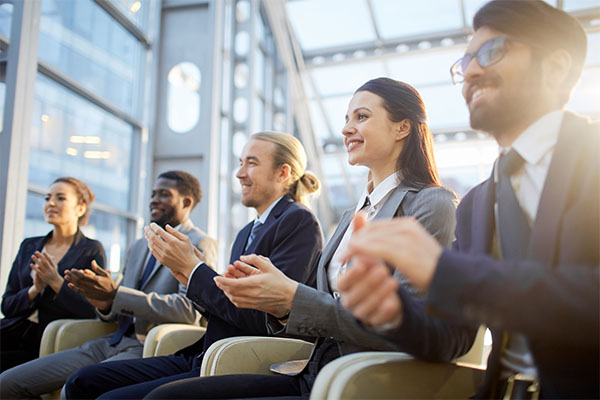
Brand Experience: Inviting a good speaker and entertainment strategist is one of those spaces where it’s great to cast a wide net and think big about it.
I‘m glad you said “Cast a wide net“ because that’s important for all of business, marketing, sales, and all the concepts that we’re talking about. If you don’t allow yourself to write it on the board or wherever you’re doing your brainstorming, you will never get there. You will be right that it’s too big. You put it out there and say, “Wouldn’t that be fun though? Wouldn’t that align with what our team is needing or what our customers are wanting to hear? Isn’t that the comedian that’s going to make them belly laugh and come away feeling healthy and hearty?”
You said The Bahamas. What if we did that? What would that look like? What would that feel like? Maybe we have to reduce our audience by the first year by 50%, but would that be the perfect right audience? If that’s the perfect right audience, and we develop relationships with them, then next year, we can go even bigger. If you don’t ask the universe or the actual speaker, you won’t know. They will be too big for you.
What-if questions are so incredibly important. I worked for a design agency years ago. As we were working with clients through the creative process and we would put things in front of the client, 1 of the 2 owners was like, “You’ve gone too far.” The response was always, “These are ideas. These are pixels on the screen. Until we pull the trigger on something, these are just ideas. This idea might get us to the one that we move forward with.” You need people on your team that are open to ideas and not just shut things down. Let that exploration breathe and turn into greatness.
You need people on your team open to ideas, not just shutting things down but letting that exploration breathe and turn into greatness. Click To TweetThe other thing about putting that big idea on paper or the screen is once you put it out there if it’s determined, “It’s out of our budget this year. She’s booked,“ then you can say, “What about that made it a good decision or direction for us? What made that work? How can we draw a line to something else that may make more sense? Is there an up–and–coming someone, a venue, or a person? Can we change the venue to be able to afford that person? Which one is more important for what we’re trying to get across? Can we reduce our alcohol budget? Whatever it may be. What is our combined goal?”
Have a group of 2 or 3 people in your organization, even if they’re not on the sales and marketing team like somebody that works in shipping and receiving that is thinking differently about your business quietly in the corner and says, “What if we did this?” I‘m like, “Come into the room with us tomorrow. What if we did that? That’s a great idea. Let’s talk about it further.” The silos should be completely broken down.
One thing that I want to make sure that we talk about too is the overlapping of virtual and in-person that has become a reality for events these days, and the benefits that it has provided. At first, when it was COVID and we didn’t have a choice, we were like, “What have we got?” We had to throw so many more ideas on the wall to say, “How can we get people engaged?” It opened up tech technology and a mindset of people don’t have to travel to feel the experience. Tell me what your thoughts are on how to do that and how often it’s done.
I love where we’re at on this topic now because we were thrown into it. We didn’t have a choice. It all had to be virtual. I love that coming out of that, people were so excited to get back to in-person. Once it was all clear or mostly clear to do in-person events, so many of our clients were right back doing it but tacking on or adding in a virtual component. If there were people who still weren’t comfortable, they weren’t being excluded, or if our budget didn’t allow us to bring the few thousand people from this region, and we’re talking from a corporate perspective here, we were able to include those people through a virtual component. It naturally made the audience bigger. I love that it has been the outcome.
You do have to think, “How do we design that experience for the in-person attendee and the virtual attendee? They are two different experiences.” We will use Starbucks because those are everywhere. If you go to Starbucks, there are three different types of customers. There’s a customer who walks in, orders coffee, and sits down. They work, sit, and have coffee. There’s a person who comes in, orders coffee, and leaves. There’s the customer who goes through the drive-through. Those are three different experiences that Starbucks has to think about. What is that drive-through person experience? What is the person sitting’s experience? What is the in-and-out person experience?
For a corporate event, we’re thinking about what are those people that are in the room experiencing, sitting with a thousand people around them, seeing the speakers, all of the content, and the big screens, having the meals, and all of that. The person who is going to get up in the morning, log on, and view this event throughout the day needs a very different experience. They need more things built into the experience that is going to keep them engaged because we know what can happen.

Brand Experience: People need a very different experience. They need more things built into the experience that will keep them engaged.
They’re going to be working or managing children.
It’s easy to do that. There are ways to do that. There are ways to build interactive pieces just for them, whether it’s something physical that gets delivered to them before the event so that they can interact with that. There are yoga sessions during the breaks. There’s music and entertainment. The interface of the actual event as they’re watching it on whatever device they’re watching it. All of those things need to be designed and not forgotten.
One thing that is important to stress is that you are designing an experience. We have talked about people. You’re designing an experience for people. You look at a spectrum of the experience from the beginning to the end. The beginning might be the moment that they check in at the hotel or sit down in the morning for their very first speaker, all the way to the end. If you look at that as a spectrum, map it out and determine as the person goes along that spectrum, are they positive experiences, neutral experiences, or negative experiences?
You need to know the answer to each of those so that if there are any negatives or neutrals, you think about how you can elevate those, and determine which ones need to be. We don’t have unlimited budgets. We have to be realistic, but let’s make sure that we think about these things so we have the best opportunity to create the best experience.
You’re mapping out that journey. I call it a brand experience map. It’s important for the single events that you do and what we’re talking about, as well as the whole sales process. A lot of people will talk about the sales journey or the sales funnel but what is your brand experience map? How many times does someone come across your brand? Package design is something that you have some experience and expertise in. You have so many things that are in your control or out of your control. What stores your package is in makes a big difference because that’s part of the experience.
How the salespeople are going to be talking about your product when you’re not around is a part of the experience. You always want to be at eye level and all that stuff, but what is it next to? If you’re a shampoo, it’s usually by price point. Can you talk to your sales rep and say, “I want to be next to this brand in particular or between these two brands.” You want an end cap but you can’t always get that.
It’s the entire experience internally and externally. If somebody calls, writes a letter, or puts something up on Twitter about their experience, what’s the experience they get back? All of that makes a big difference in return customers and employee experience, but you can map it out. You don’t have to guess. You don’t have to silo and say, “This is our sales experience. This is our marketing experience. This is our shipping and receiving experience.” They’re all a part of the journey. Your events are big, “This is amazing. I‘m all-inclusive,” but once they leave that big and amazing experience, what happens next?
The event is not over. It’s important to think about what is next. What is the follow-up? How do you keep the memories alive for people? That’s a very good point. The event doesn’t end when people fly out and go home or drive home from the day. Keep it going. Don’t let it stop there. Some of that does happen in the sharing. It is important to build social media into these experiences as well and monitor that. The marketing leaders and the leadership team need to be tuned in. What are people talking about? What are they sharing?
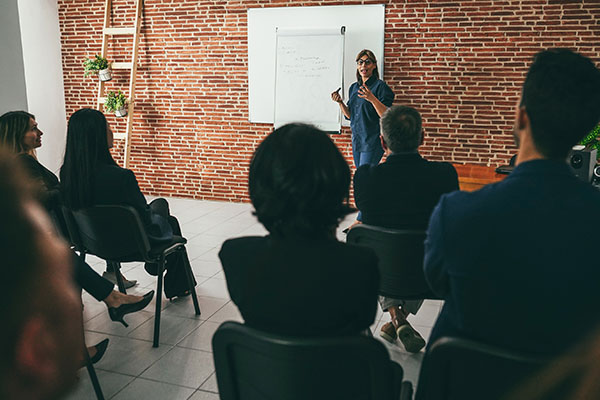
Brand Experience: The event doesn’t end when people fly out and go home or drive home from the day. Keep it going.
There’s a wealth of information that comes from that which will help you then look at, “What are we going to do next time? What did we learn from this? What can we do differently?” Differently doesn’t necessarily mean that something didn’t work. The thing is people want something different every time. As human beings, it gets hard to surprise and delight people. That is an ongoing challenge, “How do we top that?” That doesn’t necessarily mean that it has to be bigger and more money. It just has to be different.
That’s a good point. I talk a lot about businesses needing to have a clear mission and vision, and everybody being aligned to that. Having a clear idea of the feeling that you want your customers to have is how you determine what’s next and what’s different but evokes the same feeling, depending on what the goal of the event or the experience is. If it’s a brand-new product launch, then you want it to feel a little bit different than product training or something like that.
That‘s why we have new campaigns that come out all the time as businesses and marketers, but you can’t have a new campaign for the sake of a new campaign. What’s the point? What’s the purpose? How are we trying to make people feel and engage with us? A lot of marketing in the last 10 to 15 years was talking about how you create your tribe. You can do it in a manipulative way but if you have a core essence of feeling what you are trying to achieve for your customers, then it’s not manipulative. It’s simply communicative.
If you have an essence of the feeling of what you try to achieve for your customers, then it's not manipulative. It's simply communicative. Click To TweetHere’s what’s interesting. This brings us all the way back to the beginning of our conversation. When I surprised myself and said, “I want to go into sales,” the big learning for me very quickly in my first sales job was that I realized I wasn’t selling anything. It’s what made me fall in love, stay there for seven years, and then make some important moves in sales roles but to different companies. I was simply finding people who had a need for what we did well.
When you look at it that way, you can take any of that ickiness away from the word sales. It’s what made me fall in love with this as my career path. I don’t call myself a salesperson. My title is VP of Client Brand Experience. I’m going to help you make sure that your brand shows up the way it should at your next event. Where does that say sales anywhere in it?
I love it. That’s how all sales should be. I don’t have a degree in marketing. I went from waiting tables to Director of Sales and Marketing. The first thing that I did was start reading tons of books, going to events and conferences, and learning as much as I could. I remember being scared of sales. In a restaurant, you have to go up and ask people what they want. They’re going to tell you. They already got there. The sales process is fairly easy.
I remember a speaker saying that they had no fear of cold calling because of the way that they looked at their goal. Their goal was to talk to as many people as possible to help them solve whatever their problems were. If you believe in your product, service, or company and its ability to provide, then all you’re doing is saying, “This is what we have. This can improve your life in some way. You don’t want to talk to me anymore? I‘ll talk to the next person. If you do, let’s talk about how we can how we can benefit each other.”
That’s where sales and marketing overlap. That’s where they mesh, intertwine, and bloom. It’s quite a beautiful thing when it all works well together. It is magical. It’s because you’re looking at the customer experience as a human. We’re at the end of our journey. Is there anything else you would like to share as far as the best ways to learn about Heroic or take our audience on the next step of the journey?
I always love sharing Heroic’s story. You can find us at Heroic-Productions.com. I am always available on LinkedIn as well. I love connecting with people. I love connecting with people. If you need advice or if you’re looking to make a connection inside a company, this is one of the things that LinkedIn was designed to do. Let’s connect over there. Perhaps we can help connect with each other. I’m happy to talk with people about experiential marketing in general. The core expertise that we have is in the corporate marketing space. I’m happy to entertain any conversations there with people who may be interested. I greatly appreciate you having me on your show. I love listening to your other shows. Thank you.
The core expertise that Heroic Productions have is in that corporate marketing space. Click To TweetThank you so much for talking to us about brand experience and experiential marketing. I love it. It’s a passion of mine. I‘m so grateful to have you here with us. Thank you so much.
Thank you, Steph.
Thank you to our show supporters, Eminence M&A Strategies and Tower Commercial Real Estate. Thank you for tuning in. If you liked it, tell your friends. Follow us on Instagram and LinkedIn. The mission of the show is to dig deep into the lives of true leaders so that others can follow, knowing that the path isn’t always easy but the journey is worth it. Enjoy the day and live with passion.
Important Links
- Heroic Productions
- LinkedIn – Kitty Hart
- Eminence M&A Strategies
- Tower Commercial Real Estate
- Instagram – VINE Collective
- LinkedIn – VINE Collective
